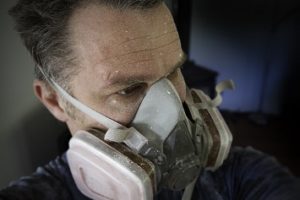OSHA’s new respirable crystalline silica in construction standard took effect September 23. But the agency will not be aggressively enforcing provisions during the first 30 days.
According to a memo from acting OSHA administrator Thomas Galassi, “During the first 30 days of enforcement, OSHA will carefully evaluate good faith efforts taken by employers in their attempts to meet the new construction silica standard. OSHA will render compliance assistance and outreach to assure that covered employers are fully and properly complying with its requirements.” The Galassi memo noted that OSHA will pay particular attention to helping employers “fully and properly” implement the controls in the standard’s Table 1.
If upon inspection, it appears that an employer is not making efforts to comply, OSHA says employers may be considered for citation. Any proposed citations related to inspections conducted during the 30-day period will require national office review. As well, OSHA says it will provide interim inspection and citation guidelines prior to the end of the 30-day period.
What Does the Silica Standard Require?
The standard requires employers to limit worker exposures to respirable crystalline silica and to take other steps to protect workers. It provides flexible alternatives, especially useful for small employers. Employers can either use a control method laid out in Table 1 of the construction standard, or they can measure workers’ exposure to silica and independently decide which dust controls work best to limit exposures in their workplaces. Regardless of which exposure control method is used, all construction employers covered by the standard are required to:
- Establish and implement a written exposure control plan that identifies tasks that involve exposure and methods used to protect workers, including procedures to restrict access to work areas where high exposures may occur.
- Designate a competent person to implement the written exposure control plan.
- Restrict housekeeping practices that expose workers to silica where feasible alternatives are available.
- Offer medical exams—including chest X-rays and lung function tests—every 3 years for workers required by the standard to wear a respirator for 30 or more days per year.
- Train workers on operations that result in silica exposure and ways to limit exposure.
- Keep records of workers’ silica exposure and medical exams.

